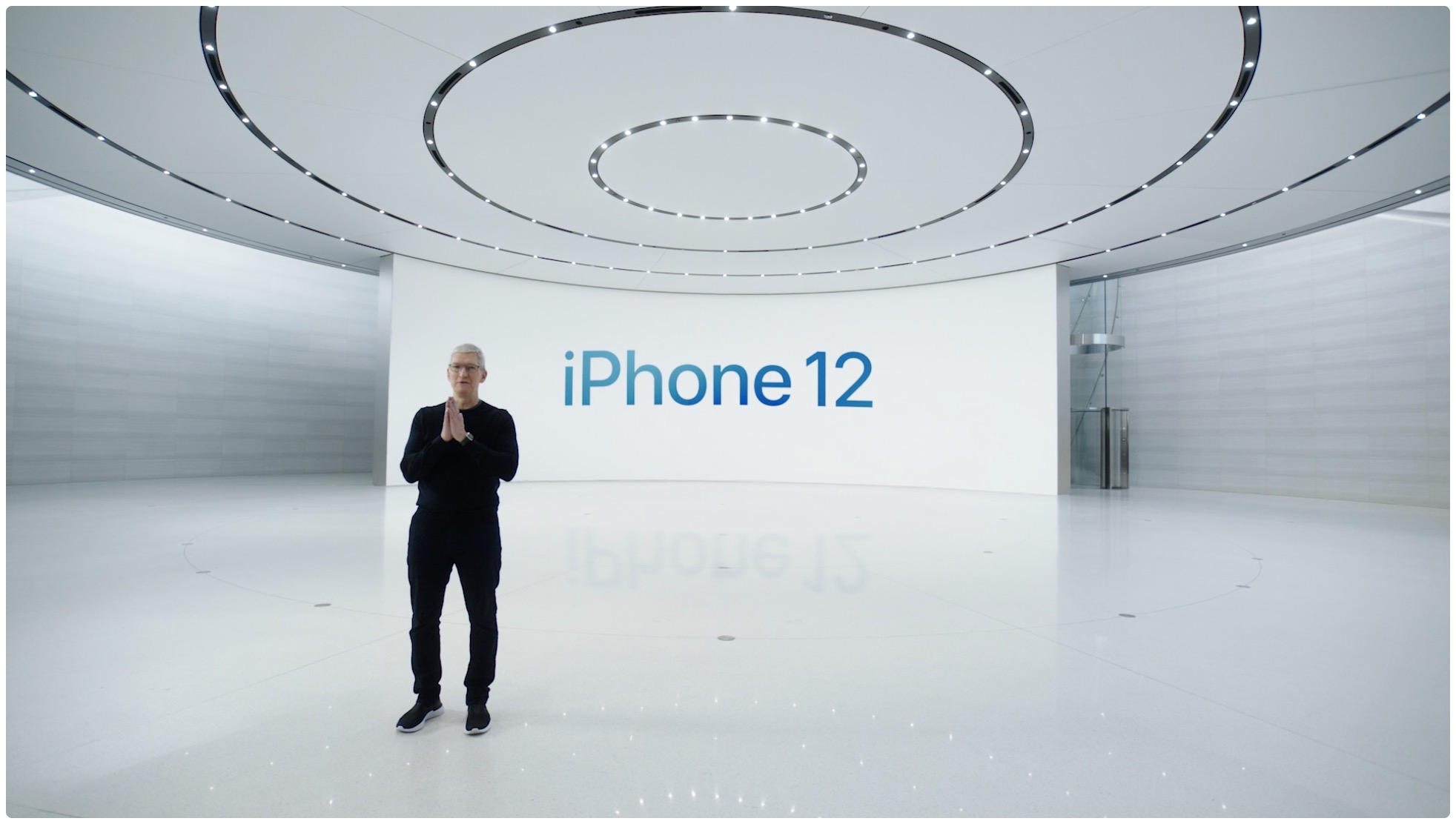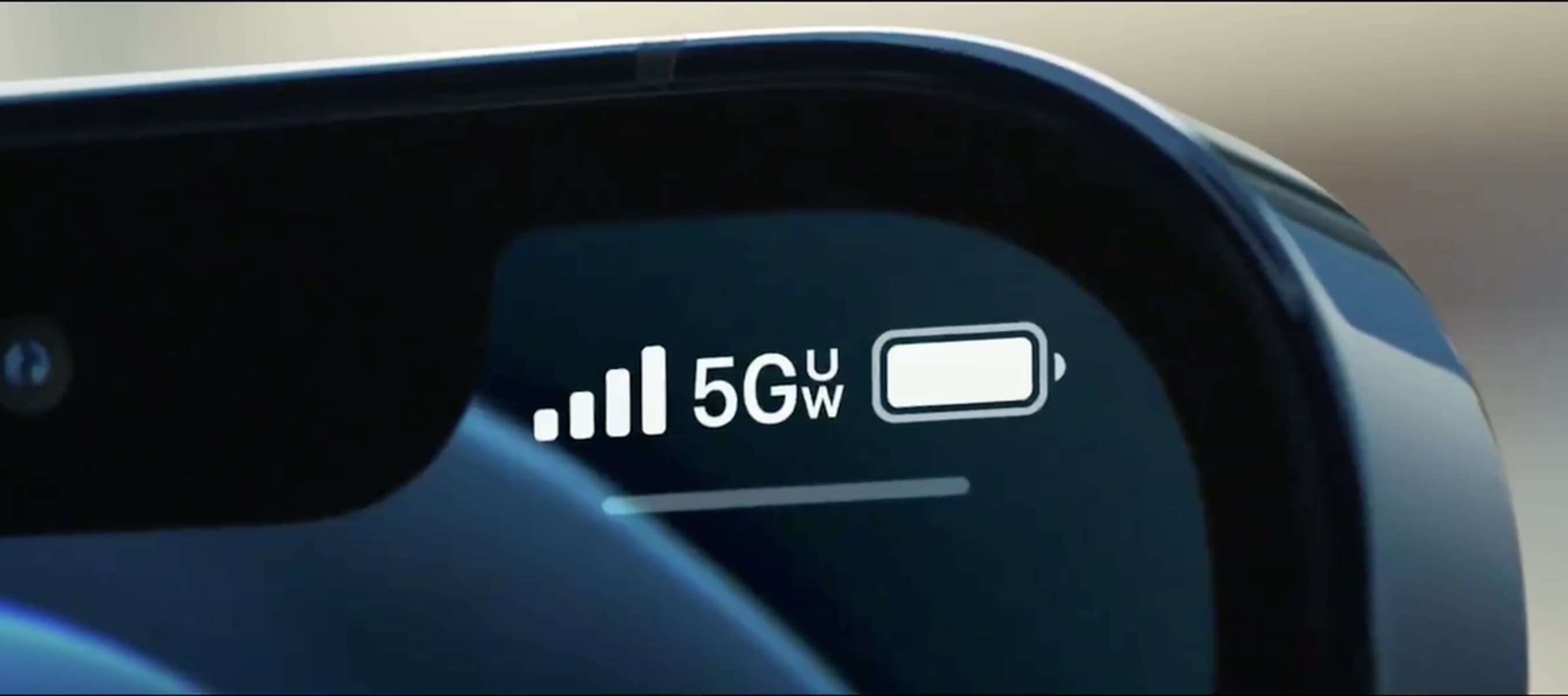
With the arrival of the iPhone 12 came an alphabet soup of abbreviations and different 5G icons in the iOS status bar, ranging from 4G masquerading as 5G to 5G Ultra Wideband. Follow along with our tutorial to learn the meaning of all those iPhone 5G icons.
Two major flavors of 5G
5G signals travel on a broad range of frequencies and each brand has its own pluses and minuses. There are two major types of 5G frequencies in use today: Sub-6GHz and mmWave.
Sub-6GHZ 5G
The iPhone 12 models sold in the United States feature support for two major flavors of 5G, Sub-6GHZ and mmWave, with the models sold outside the country supporting only Sub-6GHz. The Sub-6GHz uses low-band signals that can travel through walls and deep into buildings, providing good coverage and modest download speeds on par or somewhat higher than 4G.

mmWave 5G
The mmWave standard, also known as millimeter wave, uses high frequencies that are limited in range but deliver download speeds of up to four gigabits per second. That’s approximately four times faster than today’s fiber-optic connections, but there’s a huge caveat — the mmWave service is only available in certain city areas and congested spots in the US such as stadiums and airports. mmWave is what most people think about when referring to high 5G speeds.
How to learn the meaning of iPhone 5G icons
In terms of radio technology, the following carrier logos may appear in the status bar:
- 5G E: AT&T’s 4G network masquerading as 5G
- 5G: The regular 5G network that Verizon calls “5G Nationwide”
- 5G+: The fastest mmWave 5G network
- 5G UW: Verizon’s mmWave network that it calls “5G Ultra Wideband”
- 5G UC: T-Mobile’s higher capacity 5G network that it calls “5G Ultra Capacity”
And this is what these icons look like.
Apple provides a handy overview of the range of 5G icons that can appear in the status bar of your iPhone 12 mini, iPhone 12, iPhone 12 Pro or iPhone 12 Pro Max. Here’s how to decode 5G iconography and learn the meaning of all the different iPhone 5G icons in the status bar.
5G E
If you see “5G E” in the status bar, your device can connect to the Internet over AT&T’s 5G Evolution network. This is actually very misleading because 5G E is an improved variant of 4G, not true 5G. AT&T has been advertising this as real 5G, which provoked rival Sprint to sue the carrier over deceiving customers. However, AT&T continues to use this misleading carrier icon.
5G
If you see “5G” in the status bar, that means that your carrier’s 5G network is available. If you have one of the iPhone 12 models, your device can connect to the Internet over sub-6GHz 5G. This label denotes a fifth-generation wireless network which uses orthogonal frequency-division multiplexing (OFDM), which is a method of encoding digital data on multiple carrier frequencies that brings the promised next-generation jump in speed and performance. Again, this is your regular Sub6-GHz network (which Verizon refers to as “5G Nationwide”).
5G+
If you see “5G+” in the status bar, your iPhone 12 can connect to your carrier’s higher frequency version of 5G, dubbed mmWave. Think of it as “holy-cow-this-is-fast 5G”. This high-speed service is only available in certain parts of the United States. AT&T’s mmWave service, for example, is currently available in 36 US cities so far. The mmWave networks are supported only in the United States when using an iPhone purchased in the United States.
5G UW
Verizon wanted to be different so while everyone else uses “5G+” to label their mmWave networks, Verizon calls this service “5G Ultra Wideband,” or “5G UW.” Similar to the limited availability of AT&T’s mmWave service, Verizon’s 5G UW is live in parts of 55 US cities (coverage will expand to reach at least 60 cities by the end of 2020). Again, the mmWave networks are supported only in the United States when using an iPhone purchased there.
5G UC
Like Verizon, T-Mobile wanted to be different, especially since the un-carrier enjoys touring itself as the 5G leader in North America. T-Mobile enjoys significant amounts of mid-band 5G spectrum, and decided to brand this as “5G Ultra Capacity,” or “5G UC.” This indicator only appears when connecting to one of T-Mobile’s higher-capacity cellular towers, and users can expect speeds that aren’t quite as fast as 5G UW or 5G+, but that are much faster than 4G LTE and standard 5G.
A note about AT&T’s 5G Evolution network
Tests conducted by PCMag have shown that AT&T’s 5G E is really an improved variant of their 4G network. Sprint dragged AT&T to court over this fake 5G branding, its survey finding that 54 percent of consumers said they thought 5GE networks were the same as or better than 5G. Furthermore, 43 percent thought if they bought an AT&T phone today it would be 5G capable.
→ How to manage 5G cellular data options on iPhone
A panel of the National Advertising Review Board (NARB) cautioned that AT&T’s misleading practice is damaging the reputation of 5G, recommending the carrier discontinue its 5G Evolution advertising claims. AT&T said it would comply with the NARB’s decision, but added it will also continue to display these misleading 5GE icons on its customers’ LTE phones.